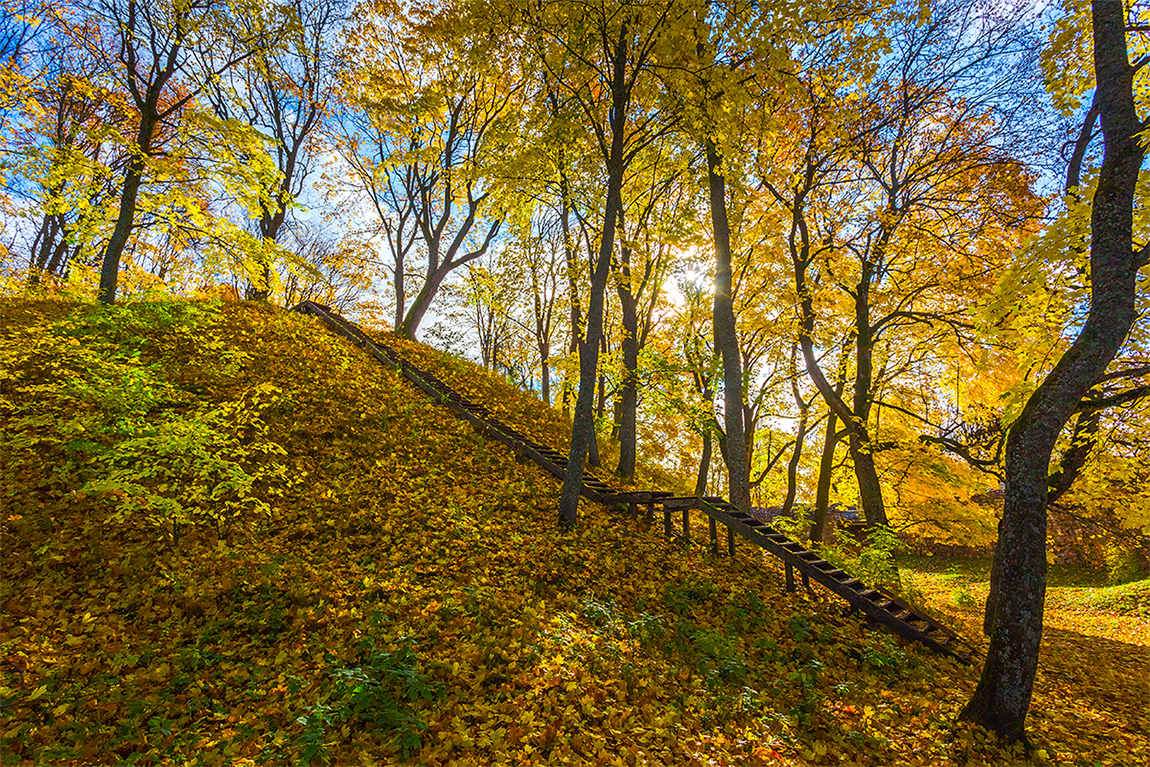Hill of Sacrifices

299

0

0
0 out of 5
(0 reviews)
The breathtaking landscape of Trakai, dotted with lakes and crisscrossed by rivers, is notable not only for its natural beauty but also for its rich cultural and historical heritage. On the western shore of Lake Luka (Bernardinų) stands a 17-meter-high hill at the tip of a peninsula, intriguingly named the Hill of Sacrifices. From the summit, adorned with rare deciduous trees, one can enjoy a spectacular view of the impressive Trakai Island Castle surrounded by lakes.
Info
-

Nature
-
Trakai
-
The breathtaking landscape of Trakai, dotted with lakes and crisscrossed by rivers, is notable not only for its natural beauty but also for its rich cultural and historical heritage. On the western shore of Lake Luka (Bernardinų) stands a 17-meter-high hill at the tip of a peninsula, intriguingly named the Hill of Sacrifices. From the summit, adorned with rare deciduous trees, one can enjoy a spectacular view of the impressive Trakai Island Castle surrounded by lakes.
A hill referred to as a mound, where a castle once stood or still stands, typically has earthworks. The word "castle" in Lithuanian derives from "pilti," meaning "to pour" or "to heap up." The Hill of Sacrifices is one of approximately a thousand such mounds in Lithuania.
The primary purpose of the Hill of Sacrifices, like any other mound, was to defend the castle and the settlement around it. The residents of the surrounding area would gather at the top of the hill to protect themselves from invaders, and armies would assemble there. The hill's summit is now 45 meters long and 17 meters wide. The hill's security was enhanced by an 18-meter-wide and 3-meter-deep moat surrounding it.
Trakai Peninsula Castle and its defensive complex with the Hill of Sacrifices are rarely mentioned in written sources. It is believed that the construction of the peninsula castle was undertaken by Duke Kęstutis in the mid-14th century and took about 20 years. Until then, the Grand Duke’s residence was in the Old Trakai Castle, located 3 km from Trakai town.
In 2005, the Hill of Sacrifices was recognized as a protected site by the order of the Minister of Culture of the Republic of Lithuania. Today, various events are held at the foot of this mound, such as medieval festivals, equestrian
competitions, and vintage car exhibitions.
The Origin of the Name "Hill of Sacrifices"
The mound within the Trakai Peninsula Castle area has been called the Hill of Sacrifices since ancient times, but the reason behind this name remains a mystery!
A widespread legend tells of pagan sacrifices made to the gods on this hill. In the mid-19th century, Count Eustachy Tyszkiewicz, who was investigating the hill, found a perforated spoon and believed it might have been used in sacrificial rituals to collect blood. Later, archaeologists examining the perforated spoon determined it was a much newer item. So far, no reliable sources confirm that this mound was ever a site for pagan sacrificial rituals.
Mound as a Defensive Structure
The primary purpose of mounds was defense, so they were always placed in locations naturally protected by geographical features. Hills surrounded by water bodies or with steep slopes were particularly suitable for building defensive mounds.
The height and steepness of the slopes are crucial for the mound’s inaccessibility. Additional protection was provided by reinforcing natural barriers with human-made embankments or moats. Climbing the 17-meter-high steep Hill of Sacrifices can be quite a challenge. Fortunately, today you can ascend the mound and enjoy the view from the stairs on the southwestern slope.
It is worth noting that it is now difficult to find a mound in Lithuania that has retained its original appearance. Often, one has to use imagination to "see" the once much higher embankments, deeper moats, or steeper slopes. You might even try to imagine the considerable weight of armor and weapons, which could burden a knight’s shoulders. After all, they could weigh from a few to 40 kilograms!
Found a mistake?
Report

 Entertainment
Entertainment
 Food establishments
Food establishments





























 54.646408, 24.938036
54.646408, 24.938036
 Get directions
Get directions









